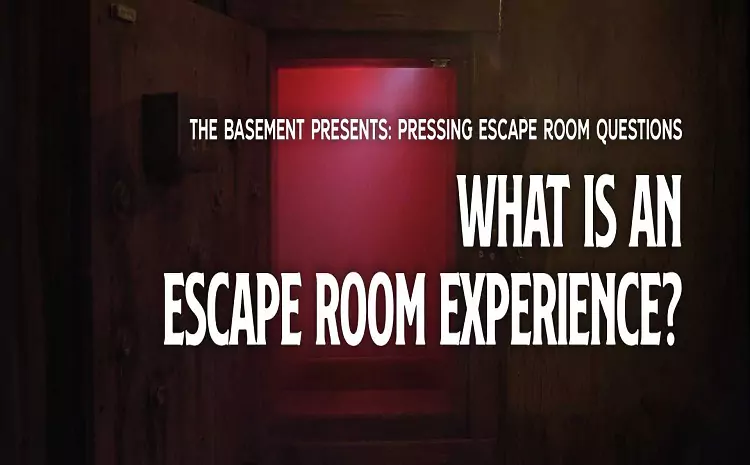An escape room is an immersive, 60-minute adventure game where participants work together to solve puzzles, find clues, and complete tasks. The goal is simple: escape from the room before time runs out. Escape rooms have become a popular activity for friends, families, and even corporate teams, combining teamwork and problem-solving in a fun, interactive environment.
Key Takeaways
- Escape rooms are interactive puzzle games where participants solve clues to escape within a set time, usually 60 minutes.
- They can be done by several participants, making it a perfect group activity.
- Teamwork, communication, and critical thinking are key to solving the puzzles and unlocking secrets.
- Escape rooms are often themed, adding a story element to the experience.
How Do Escape Rooms Work?
In an escape room, participants are locked in a room, usually designed around a specific theme, like a haunted house or a spy mission. The escape room game is filled with clues, puzzles, and hidden objects that players must discover and solve within 60 minutes to escape.
The Basics of an Escape Room
- Teams: Participants are usually in groups of 2 to 8 people.
- Objective: Solve puzzles and complete tasks to escape before the timer runs out.
- Puzzles: Players will encounter various challenges that require logic, creativity, and teamwork.
- Storyline: Many escape rooms are based on a specific theme, creating an engaging story.
| Escape Room Elements | Description |
|---|---|
| Teams | Groups of 2 to 8 participants |
| Objective | Solve puzzles and escape the room within 60 minutes |
| Puzzles | Various challenges requiring teamwork and thinking |
| Storyline | Themed rooms with an immersive story |
Types of Puzzles in Escape Rooms
Escape rooms offer a wide variety of puzzles to challenge players. These puzzles typically require teamwork and clever thinking to solve, and they come in different forms.
Common Puzzle Types
- Logic Puzzles: Players must use deductive reasoning to solve the problem.
- Physical Puzzles: Tasks that involve manipulating objects, such as unlocking locks or moving pieces into place.
- Word Puzzles: Solving riddles, deciphering codes, or finding hidden messages.
- Combination Locks: Many puzzles require figuring out combinations to open locks that lead to more clues.
| Puzzle Type | What It Involves |
|---|---|
| Logic Puzzles | Use of reasoning and logic |
| Physical Puzzles | Manipulating objects in the room |
| Word Puzzles | Solving riddles and codes |
| Combination Locks | Figuring out codes to unlock further clues |
Why Are Escape Rooms Popular?
Escape rooms have grown in popularity because they offer an immersive experience that combines teamwork, problem-solving, and a sense of adventure. Unlike traditional games, players become part of the story, interacting with the environment and working together to achieve a common goal.
Team Building and Communication
Many companies use escape rooms as team-building exercises because they encourage communication and collaboration. In an escape room, every player’s input is valuable, and solving the puzzles often requires combining the skills of all team members.
| Benefit | How Escape Rooms Help |
|---|---|
| Team Building | Encourages teamwork and collaboration |
| Communication | Players must share ideas and work together |
| Problem-Solving | Enhances critical thinking and creativity |
Different Themes for Escape Rooms
One of the exciting aspects of escape rooms is the variety of themes. From mystery to horror, each escape room transports players into a different world, making the experience even more immersive.
Popular Escape Room Themes
- Spy Missions: Players must stop a villain, disarm a bomb, or retrieve a stolen object.
- Haunted Houses: Solve puzzles to escape a spooky, eerie environment.
- Heist: Break into a vault or steal a valuable item without getting caught.
- Historical Adventures: Travel back in time and solve ancient mysteries.
| Theme | Example Scenarios |
|---|---|
| Spy Missions | Disarming bombs, retrieving stolen items |
| Haunted Houses | Escaping ghosts or solving supernatural mysteries |
| Heist | Breaking into vaults or stealing artifacts |
| Historical | Solving puzzles in ancient or historical settings |
How to Win an Escape Room?
Winning an escape room requires strategy and good team dynamics. Here are some tips to improve your chances of solving all the puzzles in time.
Tips for Escape Room Success
- Communicate Constantly: Share every clue and idea with your team. Everyone should be on the same page.
- Divide and Conquer: Don’t have everyone working on the same puzzle. Split up and work on different tasks.
- Stay Organized: Keep track of which puzzles have been solved and what clues still need attention.
- Pay Attention to Detail: Look closely at the environment. Sometimes, the smallest detail can be a big clue.
- Time Management: Keep an eye on the clock, and make sure to prioritize the puzzles that seem more critical.
| Tip | Why It Works |
|---|---|
| Communicate | Ensures no clue or idea is missed |
| Divide Tasks | Speeds up the puzzle-solving process |
| Stay Organized | Avoids confusion and repeated effort |
| Pay Attention | Helps catch small details that may lead to solutions |
| Time Management | Ensures you solve puzzles within the time limit |
Conclusion
An escape room is more than just a game, it’s an immersive, interactive experience that tests your teamwork, problem-solving, and communication skills. Whether you’re unlocking secrets in a mystery puzzle or saving the world in a spy mission, escape rooms provide a unique, exciting challenge for people of all ages. By working together to solve clues and beat the clock, participants get to experience the thrill of escaping a themed room while having fun with friends, family, or colleagues.









